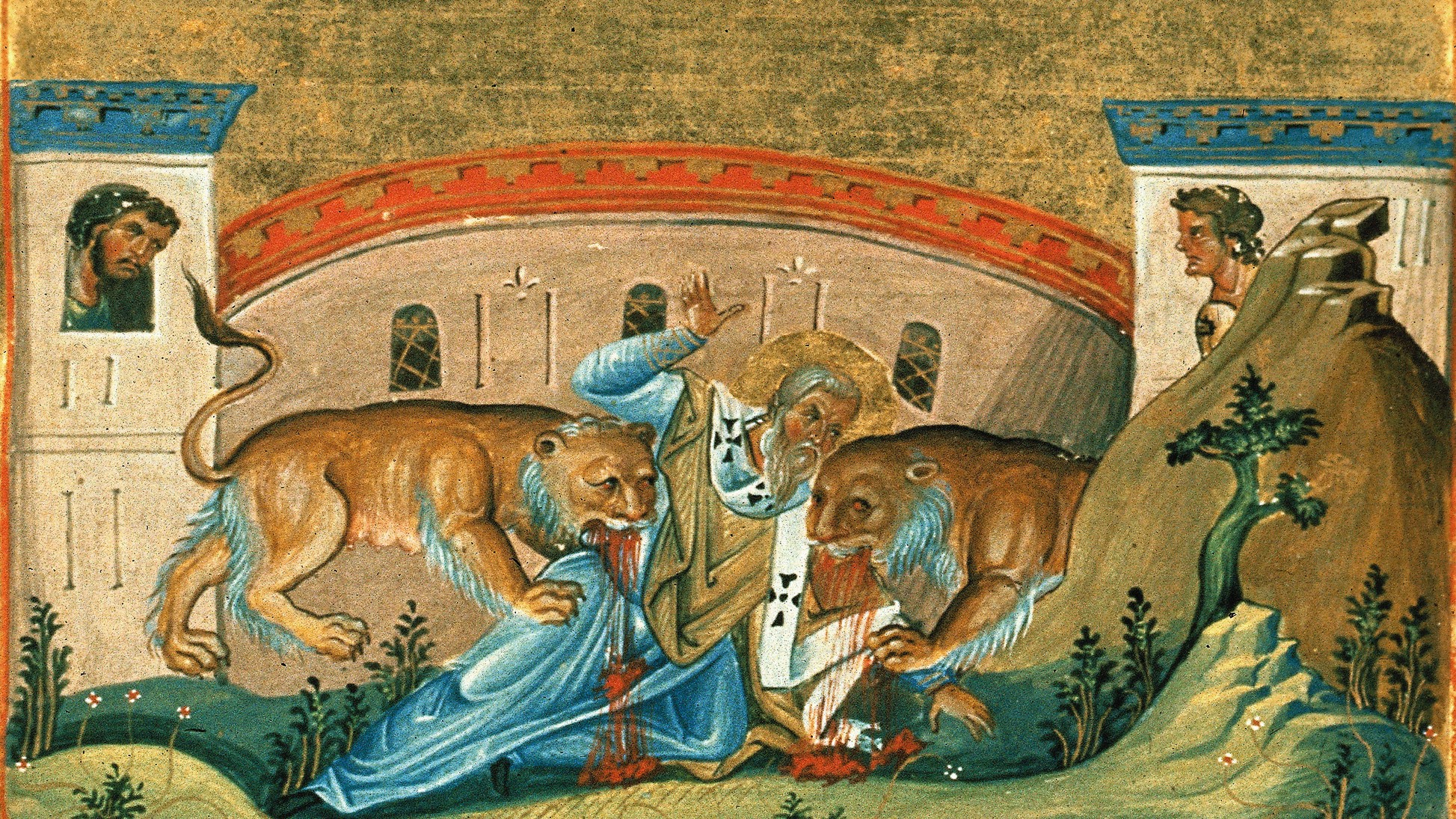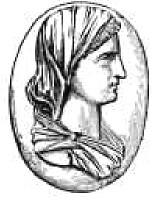The Marcionite Church is pleased to announce the reconstruction of the Marcionite Synaxicon, which includes seven epistles attributed to Marcion of Sinope. These epistles will now be included in all future copies of the Testamentum.
You can also read each of Marcion’s epistles on this website: the Epistle to the Ephesians, the Epistle to the Magnesians, the Epistle to the Trallians, the Epistle to the Romans, the Epistle to the Philadelphians, the Epistle to the Smyrnaeans, and the Epistle to Metrodorus.
The name Synaxicon comes from Greek synaxis (“gathering, assembly”) joined to the book-title ending -ikon, whose κ (kappa) becomes c in Latin, yielding -icon and meaning “the book that gathers together.” Marutha of Martyropolis records that Marcionites possessed a book called the Saka—Syriac for “Sum,” “Summary,” or “End”—and its Greek equivalent would indeed be the Synaxicon, typically a compendium of the lives of saints and martyrs.
Several scholars and theologians, including Hermann Detering, Joseph Turmel, Alfred Loisy, and Roger Parvus, have theorized that the seven epistles attributed to Ignatius of Antioch were initially composed by a Marcionite. Building on this premise, the Marcionite Church recognizes these epistles as the work of Marcion of Sinope himself, written shortly before his martyrdom in Rome in 154 C.E. These epistles were subsequently compiled into a single codex known as the ‘Saka’ in Syriac or ‘Synaxicon’ in Greek. They were later incorporated into the Marcionite canon after Marcion’s death.
Historical evidence suggests that after his excommunication from the Roman Church, Marcion returned to the East to lead his numerous congregations in Anatolia and Syria. Notably, all these epistles are addressed to churches in Marcion’s native Anatolia. The author of the epistles identifies himself as the Bishop of Syria, based in Antioch. Marcion established himself as the bishop of Antioch after failing to attain the position of bishop of Rome. Antioch was a prominent early Christian center, particularly for Pauline Christianity. It was also the first city where Jesus’ followers were called ‘Christians,’ and these epistles contain the earliest recorded use of the term ‘Christianity.’
Strikingly, extant lists of bishops of Antioch reveal vacancies and overlapping dates between the 140s and 160s, aligning precisely with the period during which Marcion could have occupied this position. Antioch, like Rome, maintained an episcopal lineage that claimed apostolic succession through Paul the Apostle. Additionally, patristic sources describe Syria as a stronghold of Marcionite Christianity, and archaeological evidence—such as the discovery of a Marcionite church in the region—corroborates this assessment.
Another key connection between these epistles and Marcionite Christianity is their numerous references to and quotations from the Odes of Solomon, which were originally Marcionite psalms contained within the Psalmicon.
Irenaeus recounts that Marcion encountered his rival Polycarp in Rome around 154 C.E., during which Polycarp reportedly declared, “I recognize thee as the firstborn of Satan.” According to Irenaeus, Polycarp had traveled to Rome to discuss the date of the Easter celebration with Anicetus, placing him in the city around 155 C.E. This timeline aligns with the possibility that Marcion was returning to Rome to face martyrdom.
Some scholars find it unusual that the writer of these epistles was transported to Rome, as Christian persecutors typically imposed punishments locally. However, if the writer was indeed Marcion, this makes sense, as he would have been sent to Rome, where his supposed ‘crime’—the disruption and division within the Christian community following his excommunication—had originated.
Marcion’s authorship also explains why the Epistle to the Romans in the Synaxicon omits any reference to a bishop of Rome; there was no Marcionite bishop in the city. The epistles primarily address ecclesiological concerns, which aligns with Marcion’s efforts to ensure the continuity and leadership of his church before his impending martyrdom. The monarchical episcopate described in the epistles also resembles the succession of Marcionite bishops, as documented by Adamantius.
The existence of multiple recensions of these epistles suggests they were heavily interpolated over time. According to William Dool Killen, Callixtus readdressed, expanded, and interpolated these epistles in 220 C.E. to promote the monarchical episcopate. Callixtus also reattributed the epistles from Marcion to the lesser-known early Christian martyr, Ignatius of Antioch. In doing so, he altered Marcion’s commonly known title, ‘Nauclerus’ (meaning ‘ship captain’), which referred to both his profession and his maritime journey to Rome, replacing it with ‘Theophorus’ (‘God-bearing’).
Like Marcion, the newly imagined Ignatius was said to be a disciple of the Apostle John and a follower of the Apostle Paul, having been ordained as the first Bishop of Antioch by Paul. By attributing the epistles to Ignatius, Callixtus effectively pushed their composition date back to 108 C.E., a timeline many scholars deem implausible. The earliest source for this dating is the 4th-century church historian Eusebius of Caesarea. Richard Pervo argues that Eusebius may have had ideological motives for dating early church leaders and texts as far back as possible to reinforce the notion of an unbroken apostolic succession.
Scholar Paul Foster places the composition of these epistles in the early reign of Antoninus Pius, around the 150s C.E. Redating the epistles to 154 C.E.—the year R. Joseph Hoffmann suggests Marcion likely died—aligns more plausibly with their content, especially given the writer’s apparent references to Ptolemy the Gnostic, an opponent of Marcionite Christians who was active only in the 150s C.E.
Callixtus specifically altered one epistle, originally addressed to a Marcionite bishop, redirecting it to Marcion’s chief rival, Polycarp of Smyrna. This epistle was initially sent to Metrodorus, the Marcionite bishop of Smyrna, who was martyred in 156 C.E. alongside Polycarp, the Catholic bishop of Smyrna.
These epistles extensively quote Paul the Apostle, imitate his epistolary style, and express strong anti-Judaic sentiments. They also contain the earliest known argument for replacing the Jewish Sabbath with the Christian Lord’s Day on Sunday, a tradition originally advanced by Marcionite Christians.
The Marcionite Church does not regard the epistles found in the Synaxicon as scripture but as patristic texts valuable for theological, liturgical, ecclesiastical, and historical insights.
The reconstruction of the epistles of Marcion within the Synaxicon is based on the research of Roger Parvus (A New Look at the Letters of Ignatius of Antioch and Other Apellean Writings, 2008). The translations used for the Synaxicon are derived from the work of J. B. Lightfoot (Apostolic Fathers, 1891).



